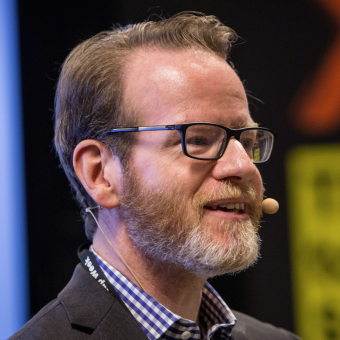
From UX to Product

What You’ll Learn
- Define product management and determine why you may want to be a PM
- Map your UX skills to product management
- Examine the other two circles of technology and business
- Collaborate effectively with engineers


What You’ll Learn


What You’ll Learn


What You’ll Learn


What You’ll Learn


What You’ll Learn


What You’ll Learn


What You’ll Learn


What You’ll Learn


What You’ll Learn


What You’ll Learn


What You’ll Learn


What You’ll Learn


What You’ll Learn


From Rosenfeld Media's Product Management + User Experience Virtual Conference.
Lots of product teams have progressed substantially over the past several years from very weak/novice to generally capable/competent. The dialog has moved from “why can’t we have a product designer or user researcher on our team?” to “why is it that our product manager and product designer are not always working together effectively?” and “why is it that the user research is being largely ignored when they have such seemingly valuable findings?”
This is actually progress, and we can see the improvements in the results, but in the commercial product world, it’s not sufficient to just have mediocre products, at least not for long. Our products have to provide substantial value over and above the alternatives. In this presentation, Inspired author Marty Cagan will focus on raising the game of product managers, product designers and user researchers. He will highlight several of the top issues/problems for these roles, and discuss how you can address each.


From Rosenfeld Media's Product Management + User Experience Virtual Conference.
Product teams spend a lot of time making decisions about what the customer will experience. UX Designers make journey maps and interfaces. Product Managers build and prioritize roadmaps. Marketing writes copy and gets in front of potential users. Engineers make it all into a product. All too frequently, we do these things separately, which can lead to problems. Engineering doesn’t understand the ideal user flow. Designers don’t know why one feature is being built before a more important one. Marketing has a different vision of the ideal customer. And Product Managers have to run around explaining the vision to everybody on the team.
Some things are so important that they need to be created, shared, and understood by the whole team together. The User Lifecycle Funnel is one of those things. In this talk, Laura Klein, author of the forthcoming Build Better Products, will share a framework and a design thinking exercise for making sure that everyone on your team—including Product Managers and UX Designers—is united in their vision for just what exactly it is that you’re building. You’ll learn a quick, hands-on tool that will help you combine qualitative and quantitative data to determine and measure every step of your customer’s journey.


From Rosenfeld Media's Product Management + User Experience Virtual Conference.
UX strategy is part of product strategy. It is not its own thing. Calling it out as such further isolates designers from their colleagues in “the business” and in Product Management. It does nothing to actually drive the value of a holistic user experience into the org’s mainstream conversations. Instead, designers should work closely with Product Managers to inform a product strategy conversation that considers not only the UX but the business’ and product’s success factors as well.
In this talk, Jeff Gothelf—co-author of Lean UX and the forthcoming Sense and Respond—will teach you:


What You’ll Learn


What You’ll Learn


What You’ll Learn


What You’ll Learn


PJ’s team recently transitioned from reactive, agency-like project work to a proactive, self-driven roadmap. They had to figure out a way to collaborate efficiently across 5 different disciplines—and a bunch of time zones—to make awesome products for their customers. And, they had to convince everyone else at Amazon to get with the program.
Find out from PJ how talking and listening can be the key to creating meaningful change. He’ll share everything his team learned about winning allies, building responsive systems and processes, and meeting the needs of a user base that spans the globe.


What You’ll Learn
Did you know that you can get instant 48–hour access to any seminar for just $19/seminar?